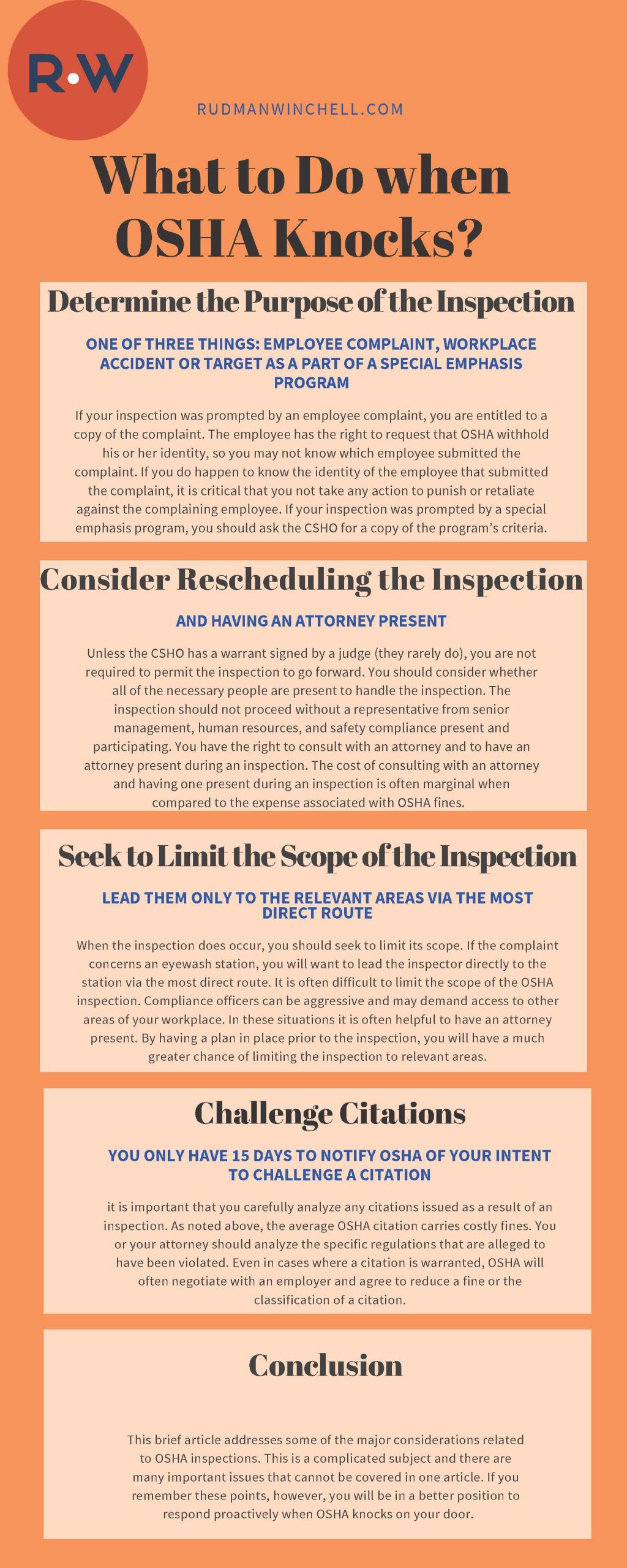OSHA Inspections: What to do When OSHA Knocks?
Determine the purpose of the OSHA inspections
One of three things: Employee complaint, workplace accident or target as a part of a special emphasis program
If your inspection was prompted by an employee complaint, you are entitled to a copy of the complaint. The employee has the right to request that OSHA withhold his or her identity, so you may not know which employee submitted the complaint. If you do happen to know the identity of the employee that submitted the complaint, it is critical that you not take any action to punish or retaliate against the complaining employee. If your inspection was prompted by a special emphasis program, you should ask the CSHO for a copy of the program’s criteria.
Consider rescheduling the inspection and having an attorney present.
Unless the CSHO has a warrant signed by a judge (they rarely do), you are not required to permit the inspection to go forward. You should consider whether all of the necessary people are present to handle the inspection. The inspection should not proceed without a representative from senior management, human resources, and safety compliance present and participating. You have the right to consult with an attorney and to have an attorney present during an inspection. The cost of consulting with an attorney and having one present during an inspection is often marginal when compared to the expense associated with OSHA fines.
Seek to limit the scope of the inspection
Lead them only to the relevant areas via the most direct route
When the inspection does occur, you should seek to limit its scope. If the complaint concerns an eyewash station, you will want to lead the inspector directly to the station via the most direct route. It is often difficult to limit the scope of the OSHA inspection. Compliance officers can be aggressive and may demand access to other areas of your workplace. In these situations, it is often helpful to have an attorney present. By having a plan in place prior to the inspection, you will have a much greater chance of limiting the inspection to relevant areas.
Challenge citations
You only have 15 days to notify OSHA of your intent to challenge a citation
it is important that you carefully analyze any citations issued as a result of an inspection. As noted above, the average OSHA citation carries costly fines. You or your attorney should analyze the specific regulations that are alleged to have been violated. Even in cases where a citation is warranted, OSHA will often negotiate with an employer and agree to reduce a fine or the classification of a citation.
Conclusion
This brief article addresses some of the major considerations related to OSHA inspections. This is a complicated subject and there are many important issues that cannot be covered in one article. If you remember these points, however, you will be in a better position to respond proactively when OSHA knocks on your door.


